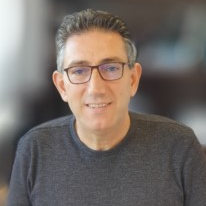Sustainable Waste Water Management and Treatment
A special issue of Sustainability (ISSN 2071-1050). This special issue belongs to the section "Waste and Recycling".
Deadline for manuscript submissions: closed (31 October 2023) | Viewed by 4303
Special Issue Editors
2. Chemical & Biochemical Sciences, Green Process Engineering, Mohammed VI Polytechnic University, Ben Guerir, Morocco
Interests: adsorption treatment; infiltration–percolation treatment; solar distillation; bioadsorbents; water pollution; sludge valorization; water reuse; waste valorization; physical–chemical characterization of wastewater
Interests: phosphoric acid; desalination; phosphogypsum; trace elements; rare earths; novel products; water; separation technologies and processes in different industrial sectors; the purification and treatment of phosphoric acid
Interests: wastewater treatment; hydrodynamics; mass transport in porous media; filtration; soil remediation technology; fate and transport of contaminants in subsurface soils; colloid and bacteria contamination; biological treatment; physico-chemical processes at solid–air–water interfaces
Interests: advanced oxidation processes; kinetic growth; biomass growth, industrial and urban wastewater, contaminant removal; wastewater treatment; clean technologies; sustainability and regeneration of wastewater; circular economy
Special Issues, Collections and Topics in MDPI journals
Special Issue Information
Dear Colleagues,
Due to the increasing water demand, wastewater treatment plants (WWTPs) do not only remove impurities and pollutants from wastewater, but also convert it into an effluent that can be returned to the water cycle. There are varieties of sustainable wastewater treatment technologies allowing for wastewater to be reused, including biological, chemical and physical processes. A combination of these is often applied to acquire a water quality that complies with environmental protection regulations, and to develop the most cost-effective management solution for wastewater.
In this sense, the type of treatment or combination of different varieties of treatments are able to ensure a sustainable wastewater treatment, allowing for decreases in energy consumption and greenhouse gas emissions and the recovery of raw materials in order to conserve natural resources.
This Special Issue of Sustainability aims to provide scientists, professors, professionals and research scholars with opportunities and challenges to develop and share their latest advances in sustainable wastewater management and treatment. For this reason, we are pleased to invite authors to submit original research as well as review articles with the potential to improve the development of this field.
We look forward to receiving your contributions.
Dr. Mounia Achak
Dr. Khaoula Khaless
Dr. Edvina Lamy
Prof. Dr. Gassan Hodaifa
Guest Editors
Manuscript Submission Information
Manuscripts should be submitted online at www.mdpi.com by registering and logging in to this website. Once you are registered, click here to go to the submission form. Manuscripts can be submitted until the deadline. All submissions that pass pre-check are peer-reviewed. Accepted papers will be published continuously in the journal (as soon as accepted) and will be listed together on the special issue website. Research articles, review articles as well as short communications are invited. For planned papers, a title and short abstract (about 100 words) can be sent to the Editorial Office for announcement on this website.
Submitted manuscripts should not have been published previously, nor be under consideration for publication elsewhere (except conference proceedings papers). All manuscripts are thoroughly refereed through a single-blind peer-review process. A guide for authors and other relevant information for submission of manuscripts is available on the Instructions for Authors page. Sustainability is an international peer-reviewed open access semimonthly journal published by MDPI.
Please visit the Instructions for Authors page before submitting a manuscript. The Article Processing Charge (APC) for publication in this open access journal is 2400 CHF (Swiss Francs). Submitted papers should be well formatted and use good English. Authors may use MDPI's English editing service prior to publication or during author revisions.
Keywords
- wastewater treatment
- combination process treatment
- recycling processes
- reuse processes
- innovation and by-product valorization
- biosourced materials
- advanced technologies
- raw material recovery
- greenhouse gas emissions
- energy approach








